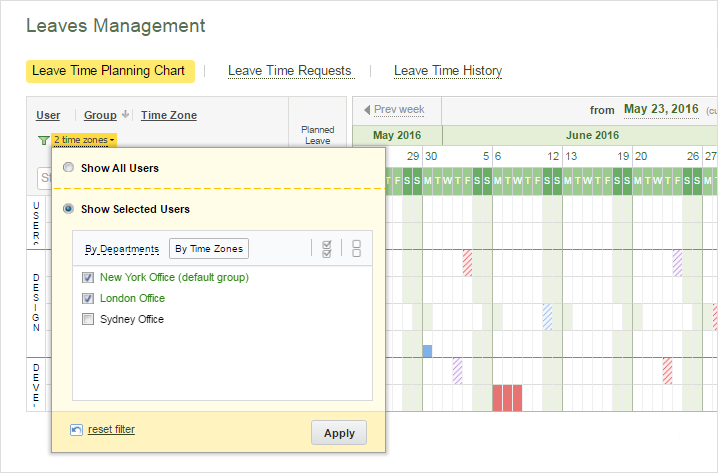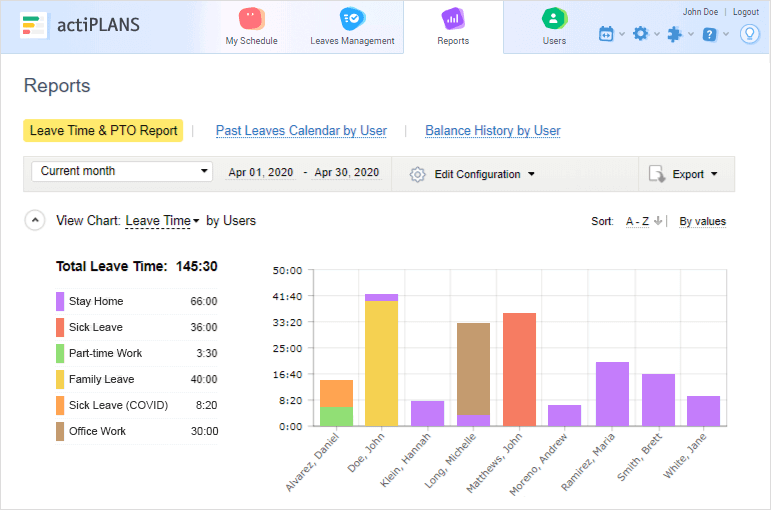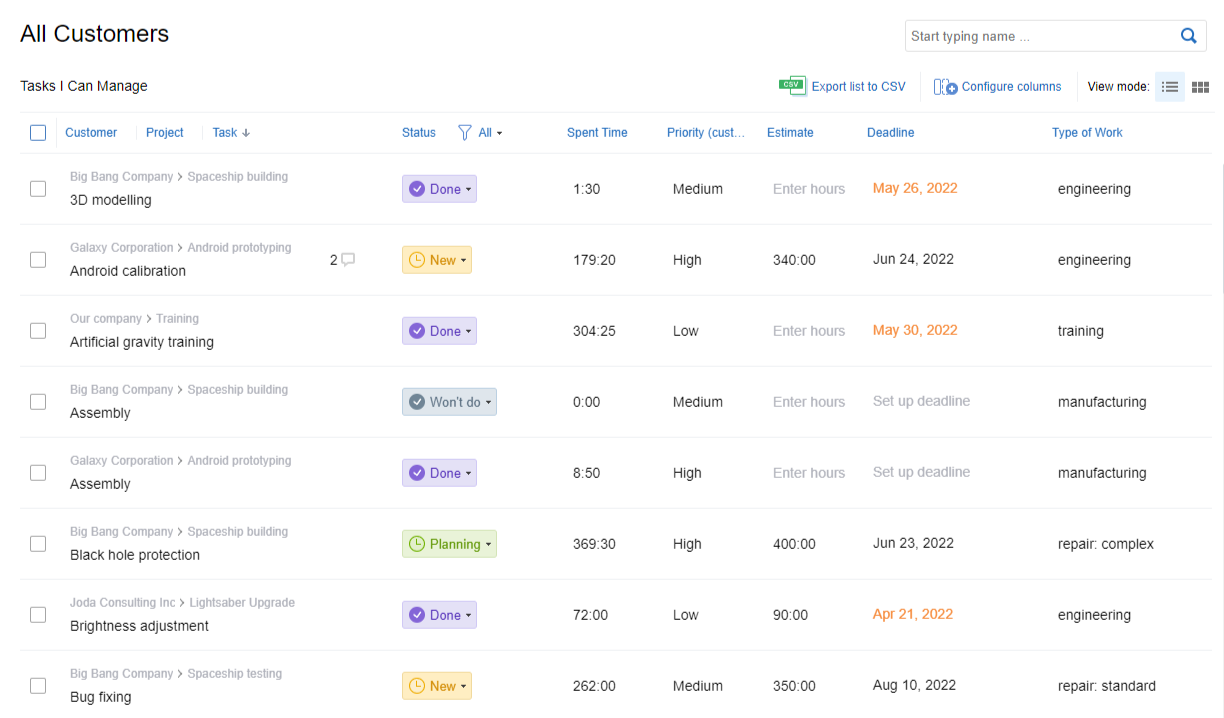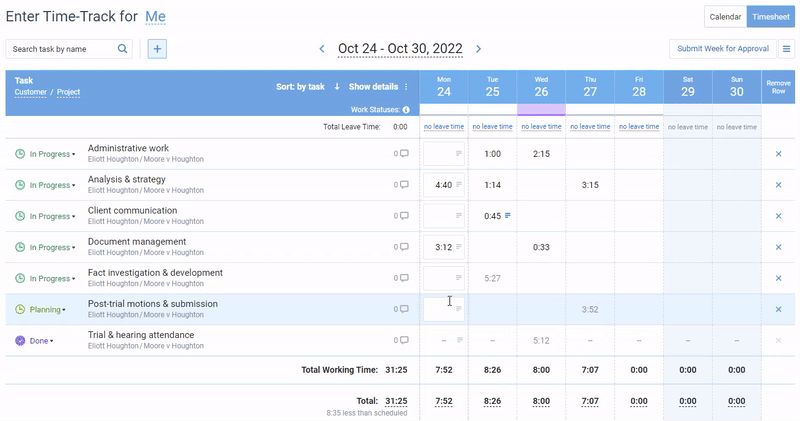Imagine a team of three working on a project that requires constant communication and collaboration. One member is based in New York, the second one is in London, and the third one is in Sydney. They all start their workday at different times, and by the time the New Yorker is awake, the Sydney-sider is already thinking about dinner.
This makes time zones one of those things that can either make or break a team’s productivity and emphasizes the importance of knowing how to handle them right.
In this post, we will explore just that – we’ll touch upon the key challenges of running a business with multiple team time zones and explain how to tackle them effectively.
Stay tuned!
How Team Time Zones Affect Business Productivity
1. Communication problems
When team members are not working at the same time, there is an inevitable delay in communication.
One person sends an email and has to wait hours for another to respond. Phone calls become a game of tag because half the team is asleep when the other half is awake. Even video conferencing can become a nightmare, with one person trying to keep their eyes open and the other trying to hold back yawns.
But it’s not just a matter of mismatched schedules – there are plenty of other factors at play.
For example, language barriers can make communication even more difficult in international teams, especially when dealing with colleagues who don’t speak your native tongue. And let’s not forget about cultural differences, which can influence everything from how emails are worded to how feedback is received.
Solution: Make a clear communication plan
Without the luxury of face-to-face interactions, it’s vital to have a solid communication plan in place.
Here are some steps you can take to create an effective plan for your distributed team:
- Set clear expectations: Your team needs to know what is expected of them in terms of communication. Will you use email, messaging, video conferencing, or a combination of all three? Make sure everyone knows what channels to use for what types of messages. Establish guidelines around response times, availability, and tone of communication.
- Use the right tools: Invest in communication tools that allow for easy collaboration, file sharing, and real-time messaging.
- Foster a culture of transparency: In a distributed team environment, it’s critical to build trust and establish transparency. Thus, encourage team members to be open and honest with each other about their progress, challenges, and ideas. Plus, make sure everyone has access to the same information, regardless of their location.
- Be responsive: As a manager, it’s vital to communicate with employees regularly, respond to them in a timely manner, and provide the support your team needs. Be mindful of time zone differences and adjust your schedule in an optimal way to be available when your team needs you but remember to maintain a proper work-life balance for yourself.
2. Irregular work hours
The life of an employee in a business with multiple time zones often feels like a rollercoaster ride. Some days, you get to feel like a jet-setting international superstar, juggling calls and emails with people in all parts of the world. And on others, you may find yourself waking up at odd hours, staying up late, and generally feeling like your work-life balance has been thrown out of whack.
Constantly adjusting to different time zones can easily wear down one’s mental and physical well-being:
- It wreaks havoc on one’s sleep schedule and causes sleep deficiency, which, in turn, can lead to multiple chronic diseases (including depression and high blood pressure) and increase the risk of injury. As a result, your business can experience an increase in absenteeism rates.
- When your schedule is constantly in flux, it can be difficult to maintain personal relationships or engage in meaningful activities outside of work. So, you end up missing out on life.
Plus, irregular work hours often have a terrible impact on employee productivity and job satisfaction.
Research has shown that irregular work schedules result in higher levels of stress and poorer work-life balance. Also, if you’re constantly playing catch-up with colleagues in different time zones, staying on top of your work and feeling like you’re making progress is difficult indeed.
Solution: Keep everyone’s time zones in mind
Staying aware of your employees’ time zone differences is the first step towards better management of a distributed team, along with its schedules, meetings, personal work-life balances, and whatnot.
So how can you make sure you never forget someone’s time zone again?
- One option is to create a spreadsheet or document that lists out each employee’s location and time zone + notes on any states or provinces that don’t follow daylight saving time.
- Another option is to use specialized HR software for managing all your employee data, including the info on everyone’s time zones.
- Or you can kill two birds with one stone and opt for a resource management solution that allows you to schedule employees and group them based on time zones all at once.
A good example of such a tool is actiPLANS.
Not only does it feature intuitive visual timelines for work and leave scheduling but also lets you assign time zones to each employee and then view staff availability and absences based on the assigned locations.
This will help you reduce headaches from trying to coordinate meetings across different continents and will give you confidence that the right people are scheduled at the right time. No more guessing games, no more frantic phone calls – just a clean and simple way to view your team’s attendance and absence data.

Check out actiPLANS in action during a free 30-day trial. Sign up here. 👈
3. Slower and poorer decision-making
When you’re dealing with different time zones, decisions can’t be made as quickly as they need to be.
Suppose there’s an urgent issue that needs to be resolved. In that case, you may need to wait hours or even days for everyone to weigh in, and by the time a decision is made, the opportunity may have passed by.
Besides, when you’re dealing with colleagues halfway across the world, scheduling an important decision-making meeting with them can feel like playing a game of Tetris because finding a time slot that works for everyone can be a massive challenge.
And even when you finally manage to get everyone on the same call, the conversation can be stilted because some team members were up before dawn, and others are counting down the minutes till they can crawl back into bed. Ultimately, this will affect the quality of decisions made.
Solution: Schedule meetings and work in advance
One of the best ways to avoid schedule mishaps and coordinate team meetings is to plan everything in advance whenever possible. Here are a few tips on how to do that more effectively:
- Track everyone’s availability: With team members spread across different time zones and personal schedules, it’s important to have a centralized location to reference when planning work. So, make sure you have a shared calendar to keep everyone’s availability and absences in check.
- Plan your workforce capacity: This means looking at the bigger picture of your team’s workload and determining whether you have enough resources to cover all the tasks at hand. Be realistic about what your team can handle, and plan ahead for any seasonal or project-based fluctuations in workload.
- Use a smart scheduling tool to make your life easier: There are plenty of online tools that can help you schedule employees’ work regardless of their time zones. Yet we recommend you use actiPLANS as it lets you create custom work types, schedule them across the team in a truly simple way, and consider everyone’s time off when planning your meetings and overall workforce capacity.

Click here to explore how actiPLANS helps to schedule any corporate events, including virtual meetings, with ease and grace. 👈
4. Weaker team cohesion
Team cohesion is the glue that binds a group of individuals together, allowing them to function smoothly and achieve success in their endeavors. However, this glue tends to be weaker in businesses that operate across multiple time zones and have irregular work hours.
As we already mentioned above, when employees’ workdays don’t quite overlap, they end up with emails and messages being exchanged at odd hours. And while technology has made it easier to work remotely, nothing beats face-to-face interactions when it comes to effective and timely team collaboration.
The lack of face-to-face interaction can also contribute to a sense of detachment and disconnection among team members. When individuals are working remotely and don’t have the opportunity to interact with their colleagues in person, it can be challenging to build the kind of strong interpersonal relationships that are necessary to maintain a positive team spirit and promote collaboration.
Solution: Arrange virtual team-building activities
By participating in team-building activities, remote workers can feel more connected to their colleagues and develop a greater sense of loyalty to their organization.
Moreover, virtual team building can improve communication and collaboration. When team members feel comfortable with each other, they are more likely to share ideas, offer feedback, and work together more efficiently. This, in turn, can lead to increased creativity, productivity, and innovation.

Virtual team-building activities can take many forms, from virtual happy hours to online gaming tournaments. The key is to find activities that are engaging and appealing to all team members. And in case you need some inspiration for arranging an awesome team-building get-together, feel free to check out this post. 👈
5. Difficulties with project coordination
All of the above challenges make project management a Herculean task – it’s like diving into a deep, murky pool of chaos and confusion that brings nothing but missed deadlines, high performance costs, and low team productivity that can eventually kill your project.
While project delays, unmet objectives, and cost overruns are the obvious outcomes of poor project coordination, the lack of synchronization also has some less obvious but not less catastrophic effects on your team:
- High turnover rates: Nothing depletes motivation more than the feeling of being disorganized and directionless, and this can lead to team members feeling dissatisfied with their work. And when employee morale dips, turnover rates increase along with it.
- Increased risk of conflict: When decisions are made without clear communication, or without buy-in from all parties involved, it can breed resentment and create a toxic work environment. Avoiding the team’s ill will should always be a priority in project management, but this is especially true in projects when tensions are high and everyone’s eyes are on the prize.
To sum it up, sloppiness in project management has a domino effect that impacts everything from deadlines to workplace culture. The best way to avoid these potential landmines is to have a rock-solid plan for how to synchronize project management efforts in your entire distributed team.
Solution: Track daily progress
The lack of face-to-face interactions and physical presence in distributed teams emphasizes the need for efficient tracking and monitoring mechanisms.
Here are some tips on how can you ensure your distributed team is on track with their daily work progress:
- Set daily objectives: They are sure to give your employees a sense of focus and purpose, while simultaneously keeping them on the straight and narrow. Such objectives give a clear vision of what needs to be accomplished throughout the day, thus promoting a sense of accomplishment and increasing productivity, which is never a bad thing.
- Schedule daily check-ins if possible: Arrange brief video meetings or phone calls, where you can discuss the ongoing work results of each team member, address any issues or concerns, and provide feedback. However, if real-time meetings are not an option, ask your employees to report on their daily performance via emails, messages in a group chat, etc. This way, you will stay up-to-date with your team’s progress.
- Use project management tools: Modern software allows you to keep an eye on the progress of each team member, track deadlines, visualize the progress of tasks, and collaborate seamlessly with your team. And when it comes to managing the performance of a distributed team, actiTIME is one of the best solutions out there. It is available as both a web-based application and a mobile app, so your team can use it on any device they prefer.
actiTIME allows you to break down tasks into smaller, more manageable chunks, which helps team members stay focused and on track. You can set up tasks according to priority, assign them to specific team members, and even set up reminders and deadlines. This way, everyone knows what they need to be working on and when it needs to be done.

With actiTIME, your team members can log their progress on each individual task. This means you can see exactly how much time is being spent on each task, how far along team members are, and what obstacles they may be encountering. This level of transparency is essential for keeping everyone on the same page and making sure that progress is being made.

For more information on how to track remote employees’ work progress with actiTIME, feel free to check out this guide. 👈
Advantages of Having a Distributed Team
While distributed team management is challenging, it’s not all doom and gloom. The benefits of having such a team cannot be overstated:
- Better innovation: Being unconstrained by geographical boundaries, companies working across multiple locations can hire the best talent from different parts of the country or the world. In other words, they have access to a wider pool of highly skilled and diverse professionals, which helps to make innovative and creative solutions.
- Remote work = lower overhead costs: With more and more people working remotely, there’s less need for physical office space, so businesses can free up financial resources for other important activities.
- Diverse and inclusive workplace culture: By hiring professionals from different backgrounds and cultures, businesses can create a more welcoming and supportive environment for all team members, which often enhances employee satisfaction and retention.
- Higher flexibility and agility: With team members working from different locations and time zones, businesses can operate around the clock and respond more quickly to the needs of customers and stakeholders. This can translate into better customer service and improved profits.
Conclusion
Working with distributed teams doesn’t have to be a problem. With the right tools and strategies in place, you can make sure everyone is productive and on the same page.
By keeping your team’s time zones in mind, implementing effective work tracking systems, and providing communication support – your remote team will be unstoppable!
So, take advantage of the benefits of running a globally connected business and join us in breaking down those boundaries of traditional work. Don’t forget to sign up for actiPLANS – it will help you manage staff absences and resources without a hitch so that everyone can benefit from better collaboration no matter where they’re located.



